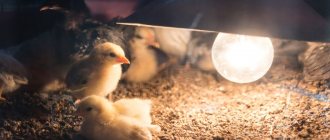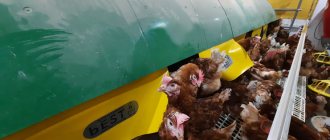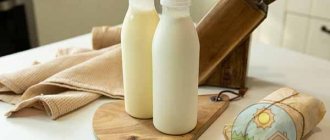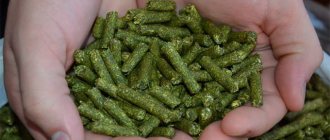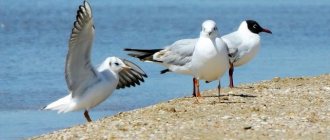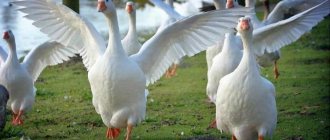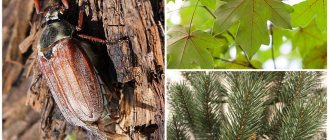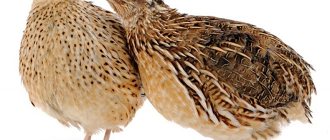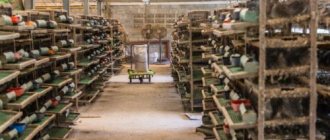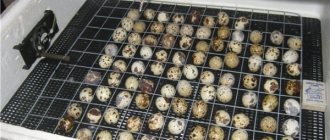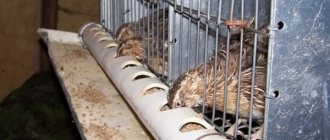Advantages of cage keeping quails
The Japanese have been raising quails as poultry since the 16th century. Asian practicality dictates that it is more profitable to keep quails in cages. This is dictated by the fact that when birds are kept in cages, the productivity (egg production) of females is higher than when kept outside.
Usually, to obtain egg production, females are kept separately from males. However, in order to obtain hatching eggs rather than food eggs, young individuals, after reaching sexual maturity, are grouped into families and placed in separate cages.
Possible problems
Nature has provided quails with strong immunity, but many problems arise for poultry farmers who work with this bird. Individuals are susceptible to:
- actively losing feather cover
- in a state of aggression, peck weaker birds to death
- they have traits of cannibalism
This condition of quails is caused by:
- drafts in the room and colds
- no light brightness adjustment
- underfeeding or unbalanced diet
- discrepancy between the area of the cages and the presence of birds in them
- poor ventilation
- high temperature in the poultry house
Organization of walking
Quails are difficult or almost impossible to keep as pet birds and it is almost impossible to roam them freely in the yard.
In summer, they can be kept in open enclosures built from metal mesh. The top should be covered with a rope net at a height of up to 50 cm. On one side, it is better to make the enclosure out of boards so that the wind does not blow through.
Street keeping of quails - on video:
Practical guidelines for cell design
There are a number of recommendations dictated by practice that it is advisable to follow before placing birds in a cage.
Quails are kept in cages, which are collected into cage batteries.
It is best to use galvanized steel cages and mesh with cells measuring 25 x 12.5 x 1.6 mm.
When keeping birds in cages, the mesh floor is made with an inclination of 7° towards the feeder and equipped with an egg collector.
Quails do not like a lot of light, so the upper tier of the cage battery is covered with sheet steel.
Quail cages are made in different versions. For example, the Tyumen Plant for the Production of Cage Equipment (TZKO) produces large cages for 30 birds with a seat size of 970*350*250 mm, as well as a version of cages for 15 birds with a seat size of 470*350*250 mm.
The feeder is fixed on the front wall, the nipple drinker is located next to the back side of the cage.
The young are placed in a cage at the age of 3 weeks.
On some cage models, in the period before egg production, the feeder lies in the lower position on the egg collector, and only then, when the bird is 6 weeks old, is it raised higher by 30 mm from the floor. This is necessary in order to free the eggs from rolling out of the cage.
Under the mesh bottom of the cage, there is a galvanized steel tray for collecting droppings, which serves as useful fertilizer for berry bushes and fruit trees.
Diet
Quail feed requires the presence of amino acids, fats, carbohydrates, mineral salts and vitamins. In order for a bird to fully digest and assimilate food, it needs gastroliths (swallowed stones and minerals) to ensure the grinding of food in the stomach.
Features of feed for laying hens
Feed for laying quails must be carefully balanced with all the necessary nutrients. With the required concentration, there will be a good percentage of egg production.
The number of eggs laid directly depends on the protein content in the feed - it should be about 26%.
One hen receives up to 30 g of complete feed per day. As a rule, females lay eggs for up to eleven months, after which they are slaughtered for meat.
For the quail
Feeding quails is usually divided into several periods.
The first period is the first week of life of the chicks. At this time, sifted feed mixture containing 24-26% protein and quail eggs are used. It is not recommended to give chicken eggs to avoid transmitting chicken diseases to the chicks through them.
The second period is 2-4 weeks. The basis of the feed at this time is a feed mixture containing at least 20-24% crude protein and 290 Kcal of metabolic energy per 100 g of feed. The food is divided into 4 daily portions.
The third period is 5-6 weeks. At this time, they provide a feed mixture intended for adult quails, but the level of crude protein is reduced to 16-18%, since the chicks may experience premature sexual development, which will adversely affect the future productivity of female egg breeds.
At the age of six weeks, quails begin to be given food intended for adult birds. Grain feeds are excluded from the diet and the proportion of succulent feeds is reduced. The content of crude protein in the feed mixture at this time ranges from 21-24%, metabolic energy is 280-290 Kcal per 100 g of feed mixture. This amount of consumed nutrients contributes to the full physical and productive development of birds.
Fattening for meat
To fatten quails for meat, the following is taken:
- males and females one month old with physical defects;
- poultry after laying has finished;
- young animals that are raised specifically for this purpose.
Meat feeding is introduced gradually. An abrupt transition can lead to bird illness and even death. Quails are housed in cages with solid walls and placed in a shaded area. Males must be kept separately from females. When fattening, quail feeding rates are the same as for adult birds, while the amount of corn and fat increases. You can create a diet of 80% broiler feed and 20% boiled peas.
The transition to a new diet can be completed in four days. On the first day, you can give the bird half the old food and half the new food. So, by gradually reducing old feeds, they will be replaced with a new diet. Fattening continues for up to four weeks. In the last week, the standard feed weight (about 30 grams) is increased by approximately 8%. With a properly selected feeding rate, a fattened bird should weigh at least 160 grams and have a good layer of subcutaneous fat in the chest.
Table 4. Standard for quail meat.
| Indicators | Meat characteristics | |
| First category | Second category | |
| Carcass condition | Muscle tissue is well developed. There are deposits of subcutaneous fat on the chest and abdomen. | Muscle tissue is developed satisfactorily. Subcutaneous fat deposits may be absent. |
| Carcass processing | The carcass is well bled, clean, without bruises or feather remains. Single stumps, light abrasions and scratches are allowed. | The carcass is well bled, clean, without bruises or feather remains. A small number of stumps, abrasions and scratches, as well as bone fractures are allowed, which do not reduce the marketability of the carcass. |
At this time, you should give the quail chopped carrots; it will give the pulp a beautiful color. Fish and its processed products, onions, garlic, and pine needles are excluded - they adversely affect the smell of meat and its taste.
Caring for caged quails
The quail feeding front should be no less than 3 cm.
To obtain food eggs, the stocking density does not exceed 115 - 120 birds per 1 m2 or no more than 85 cm2 per bird.
There should always be clean water in drinking bowls. We must ensure that no rotten bacteria get into the water; to do this, it must be changed 2 or 3 times a day, and the cage must be cleaned with a scraper.
Bird care should be organized so that the cage is always clean. Quail is a very excitable member of the pheasant family, so when cleaning the cage it is not allowed to create a nervous environment: make sudden movements, talk loudly, or knock on metal.
It is recommended to adhere to planting rules. It is important to remember that with high bird density, cannibalism is likely. The quiet placement of quails is favorably influenced by the presence of shaded areas and an increased content of animal protein in the feed.
A well-thought-out version of cages for keeping quails was developed by the Tyumen company TZKO, which specializes in the production of cage equipment for keeping poultry.
Important requirements that must be observed when keeping quails:
- Thermal mode
- Light mode
- Humidity
Read more about the modes of keeping quails in cages
Sparrowhawk disinfection
The viability of birds depends on compliance with certain maintenance conditions. For example, every poultry farmer must ensure the cleanliness of the cages where captive-bred quail live. An important stage of care is disinfection of the sparrowhawk.
Experienced poultry farmers recommend installing a disinfectant barrier right at the entrance to the poultry house. The installation of wooden barriers is also necessary. This recommendation should not be neglected, especially if the poultry house is inhabited by more than just wild fowl. Wooden fences prevent the “mixing” of birds, which, in turn, minimizes the likelihood of the spread of viral and infectious diseases.
The sparrowhawk needs to be cleaned as the perches and floor become dirty. During the cleaning period, the birds are transferred to portable cages or locked in some room (for example, a barn or outbuilding). You can wash the perches and floor with a regular soap solution, for the preparation of which it is better to use laundry soap. Be sure to dry the sparrowhawk thoroughly. When air humidity is high, it is recommended to use a hair dryer. Why dry sparrowhawk? The answer is obvious: high humidity leads to the spread of fungal and mold spores, which can lead to the development of bacterial infections among birds.
Light mode
In order for the quail that lays food eggs to feel comfortable, it is necessary to provide 17 hours of daylight. However, the lighting should not be too bright, no more than 35 Lux. The greatest productivity is observed in quails with a 20-hour daylight hours with the following regime:
- daylight hours – 18 hours
- darkness – 2 hours
- light – 2 hours
- darkness – 2 hours
Recommendation for light conditions for egg production
To obtain a breeding egg, you must try to ensure that the daylight hours do not exceed 17 hours a day. As soon as daylight hours reach 16 hours, additional lighting devices are turned off.
Light mode for obtaining hatching eggs
The highest incubation rates were achieved when an intermittent lighting regime was used: 3 hours light and 2 hours dark.
Light intensity or why bright light harms quail keeping
It is better to keep the lighting intensity moderate - no higher than 20 Lux above the feeder, which corresponds to the power distribution of lighting lamps - 4 W per 1 m2.
Bright light excites quails. They fight, peck at each other, and behave very restlessly.
The stress that bright lighting causes is explained by the fact that in nature quail live in dense grass and rarely appear in open areas. Hiding from predators.
Rules for replacing bedding
The second stage of hygiene is replacing the bedding in the sparrowhawk. As the perches become dirty, it is necessary to replace the filler. Sawdust or straw should be covered with a burlap bedding. And do not forget to treat the filler and bedding with disinfectants.
The contents of the disinfection barrier box, which is installed at the entrance to the sparrowhawk, are also updated as they become dirty, but at least once a week. What are the functions of a disinfection barrier? This device prevents debris, dust and infectious agents from the yard from being brought into the structure.
Humidity mode
The room where quails are kept should not have a humidity level below 55%.
Low humidity negatively affects egg production
Lower humidity in the room contributes to the consumption of large amounts of water by quails, while they eat less food, which affects their vital functions.
Low amounts of humidity cause changes in the body. The plumage becomes hard and brittle, the birds themselves look disheveled. In this case, you need to water the floor or place trays with water to evaporate.
A similar phenomenon is observed in summer during heat or in winter with strong heating.
High humidity above 75% is also undesirable. The optimal humidity level is 60 – 70%.
You can measure humidity with a hair hygrometer or an electronic hygrometer.
Good advice
Before you start breeding, you should take on board the advice of experienced specialists in this field:
- Before acquiring young livestock, the poultry house should be well equipped. Especially in winter, it will require careful insulation. It should receive fresh air and be completely free of drafts. Maintain indoor humidity at about 55-75%.
- Quail has a fairly strong immune system and is little susceptible to various diseases. But if you notice that the birds have begun to “go bald” or peck at each other, this indicates a violation in their care. There may be an incorrect diet, abnormal temperature conditions, malnutrition, bright lighting, etc.
- If there is too much bright light in the room, quails may stop laying eggs; moreover, the birds become aggressive and constantly start fights.
- It is not uncommon for breeding in rural areas to experience problems with electricity and frequent interruptions. Therefore, it is strongly recommended to purchase generators (autonomous devices) for constant lighting and heating. In this case, you can avoid many problems.
- It is recommended to start growing with a small number of heads. This way you will gain experience and master all the rules of care. Then productivity will be at a high level even in the harshest winters.
General microclimate in the room
The microclimate in the room where the cages are installed is important for the cage keeping of quails.
Ventilation
The level of air pollution affects the keeping of birds and the general microclimate in the room. A prerequisite for a favorable microclimate: warmth, absence of dampness, ventilation, providing fresh air at the rate of 1.5 m3/h per 1 kg of live weight of the bird, this is in the cold season. In summer, the volume of fresh air should be 5m3/h.
Air quality:
- O2 – above 20%
- CO2 – below 0.30%
- CO2 – below 40 ppm
- NH3 – below 20 ppm
- H2S – below 5 ppm
approx. ppm – one part per million
Drafts are strictly contraindicated for quails. The consequence of drafts is feather loss and subsequent illnesses.
Lighting
The presence of windows does not play a big role in the life of a quail. The light can be artificial, by setting a timer to turn on the light, it is easy to organize the lighting mode. For artificial light, incandescent lamps of 40 - 50 W are suitable, corresponding LED lamps of 5 - 8 W with a light flux of 400 - 600 Lm or fluorescent lamps of 40 W. The brightness or flow of light depends on the area of the room.
To calculate illumination, we take the following indicators. One 50 W incandescent lamp emits a luminous flux of 600 Lumens (Lm). The resulting flow is divided into six surfaces (walls, floor, ceiling). For example, the total illuminated area is 30 m². There is one lamp on the ceiling. Accordingly, the average illumination will be: 600 * 1/30 = 20 Lux
Barn cleaning and hygiene procedures
Regardless of the time of year, a responsible poultry farmer needs to remember not only the general recommendations regarding living conditions, but also that birds should live in a clean environment.
To maintain hygiene in the poultry house, disinfection measures are carried out on a regular basis in the areas where the birds are.
Before cleaning, the bird families are temporarily removed from the cage, and the home itself is thoroughly washed and cleaned:
- The bottom, bars and ceiling of the cage should be washed with soap. To do this, rub a bar of soap (preferably tar) with a damp sponge well and clean the cage. You can also use a washcloth soaked in soapy water.
- Rinse the soap off the cage using plenty of boiling water.
- Dry well. It is better to use a hair dryer for these purposes. Approach cell drying with all responsibility. Otherwise, the poultry house may become damp, and various microorganisms develop well in dampness.
Disinfection barrier
To avoid the development of quail diseases indoors during the winter season, when birds are most susceptible to them, it is recommended to install simple disinfection barriers. Anyone, even a beginner poultry farmer, can do it with their own hands.
To build a disinfection barrier, you will need:
- a box or basin with sides so low that you cannot trip over them (usually up to 5 cm);
- sawdust, foam rubber or other filler, the main condition is that it must absorb well;
- a piece of burlap the size of a box;
- any disinfectant.
To assemble this simple but effective design, you will need to complete several steps:
- Fill the container with filler so that it covers the bottom by a couple of centimeters.
- It is good to soak it in disinfectant, but so that it does not spill out when pressed.
- Cover with burlap.
When the owner of the birds enters the barn, he is required to stand with his feet on the barrier. This action allows you to disinfect shoes and prevent the entry of pathogens into the poultry house.
Disinfection of the poultry house in winter
In addition to washing and disinfection barriers, the quail’s home in winter must be periodically treated with disinfectants.
For these purposes the following are used:
- Sodium hydroxide. The solution is used to irrigate surfaces at a concentration of 3 liters of solution per 1 square meter. m of barn. Birds should not be allowed in for three hours from the moment of treatment.
- Freshly slaked lime. It is necessary to cover the walls and ceiling with whitewash in a concentration of 200 milliliters per 1 square meter. m. Do not let birds in until completely dry.
- Phospar. The solution should be used to irrigate equipment at a concentration of 2 liters of solution per 1 square meter. m. Do not allow birds in for three hours from the moment of treatment.
- Formaldehyde. Equipment, all surfaces and air are treated with an aerosol at a concentration of 20 milliliters per 1 cubic meter. m of water. Do not allow birds in for 24 hours from the moment of treatment.
- Ammonia. The entire space of the poultry house is treated with an aerosol at a concentration of 10 milliliters per 1 cubic meter. m of water. Birds are not allowed in for 1 hour from the moment of treatment, the room is well ventilated.
The value of quail meat
Quail meat contains optimally selected proteins, fats, minerals and vitamins. But at the same time, it contains practically no cholesterol. Juicy and tender, it is not for nothing that it is considered a delicacy. Dishes prepared from quail meat were served at the royal table. But meat is valued not only for its excellent taste. It is useful for feeding children weakened after illness or surgery. Because it helps restore the body, strengthen bone tissue, build muscles, and increase vitality.
